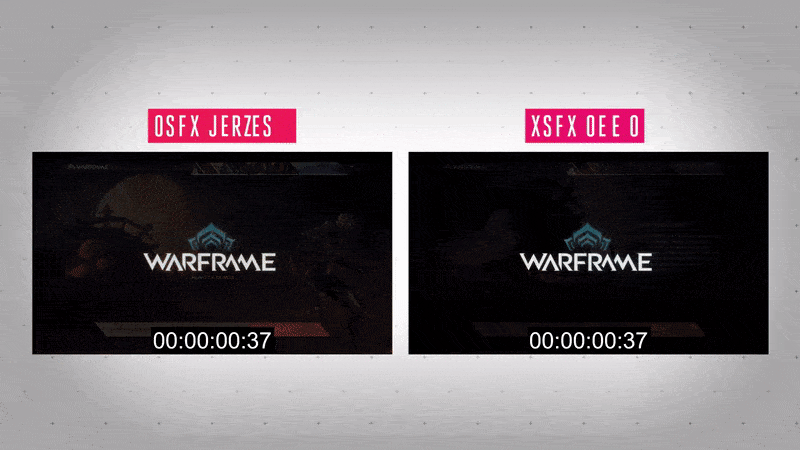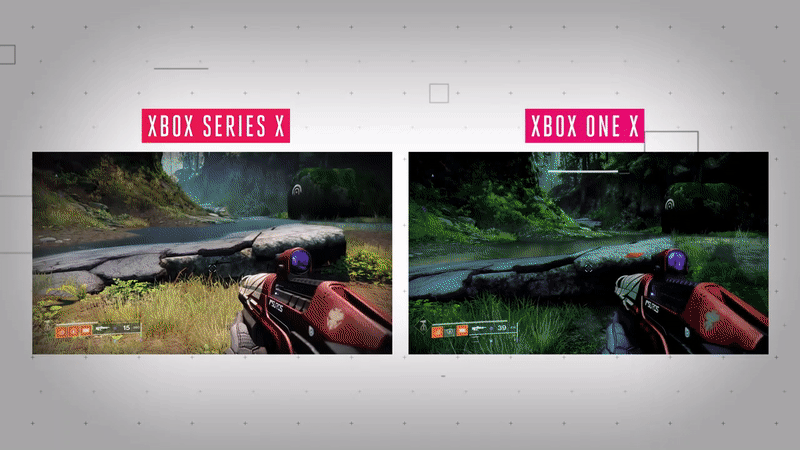I’ve spent the past week with an Xbox Series X in my living room. I’ve played a variety of games on this preview unit, testing load times, performance, and some of the new Series X features. I switched back to an older Xbox One X briefly during testing, and it was like going from cable internet back to the days of a 56k modem. That’s how much the Xbox Series X improves the games you already play every day. Everything just feels better.
As this is a preview console, I was limited to focusing on three areas for this initial hands-on: backward-compatible games, load times, and the new Quick Resume feature. I’m going to focus on my impressions of using an Xbox Series X over the past week and the solid performance improvements I’ve seen across a variety of games. We’ve already covered our initial hardware impressions of both the Xbox Series X and Xbox Series S, alongside the new controller and 1TB expansion card. You can find more about the hardware right here:
:no_upscale()/cdn.vox-cdn.com/uploads/chorus_asset/file/21916918/twarren_xboxseriesxhandson.jpg)
The most significant and obvious improvement with existing games on the Xbox Series X is the massive changes to load times. I noticed load times drop in pretty much every single game I’ve tested over the past week. Games like Sea of Thieves, Warframe, and Destiny 2 have their load times cut by up to a minute or more on the Series X.
In Destiny 2, for example, I can now load into a planet in the game in around 30 seconds, compared to over a minute later on an Xbox One X and nearly two minutes in total on a standard Xbox One. These improved load times are identical to my custom-built PC that includes a fast NVMe SSD, and they genuinely transform how you play the game — you can get more quests and tasks done instead of sitting and looking at a planet loading.
Xbox Series X load times
| Game | Xbox Series X | Xbox One X |
|---|---|---|
| Game | Xbox Series X | Xbox One X |
| CoD: Warzone | 16 seconds | 21 seconds |
| Red Dead Redemption 2 | 52 seconds | 1 min, 35 seconds |
| The Outer Worlds | 6 seconds | 27 seconds |
| Evil Within 2 | 33 seconds | 43 seconds |
| Sea of Thieves | 20 seconds | 1 min, 21 seconds |
| Warframe | 25 seconds | 1 min, 31 seconds |
| AC: Odyssey | 30 seconds | 1 min, 7 seconds |
| No Man's Sky | 1 min, 27 seconds | 2 mins, 13 seconds |
| Destiny 2 | 43 seconds | 1 min, 52 seconds |
Warframe and Sea of Thieves are equally impressive with their load times now. I can now open Warframe and the game is ready to play just 25 seconds later. That same load takes literally a minute longer on my Xbox One X. Sea of Thieves now loads to menu screens in around 20 seconds, with another 28 seconds to load into a session. On my Xbox One X, it takes a minute and 21 seconds to even load the game initially, and then another minute and 12 seconds to get into a game session.

None of these games have been fully optimized for the Xbox Series X either. This is simply Microsoft’s backward compatibility support in action. I switched back to my Xbox One X regularly throughout the week, and it was painful to witness these old load times that added a minute or more to games.
Not only do games load faster, but in many cases they also feel a lot smoother. Destiny 2 is a great example of a game that was held back by the weaker CPU and slow HDD in the Xbox One X. It’s a title that hit native 4K previously, but the 6 teraflops of GPU performance in the One X was bottlenecked by a laptop-like CPU and an old spinning hard disk. This meant the game was stuck on 30fps.
While Bungie has committed to enhancing Destiny 2 for the Xbox Series X and PS5 with 60fps support, it already feels faster without the patch. I would regularly notice frame rate drops in Destiny 2 on the Xbox One X when things got a little hectic on screen during a public event or in a raid with mobs of enemies coming at you. I haven’t seen a single stutter running Destiny 2 on the Xbox Series X.
This console has also improved other parts of Destiny 2 that were slow on the Xbox One. Loading into the character menu sometimes takes a few seconds on the Xbox One X, but on the Series X it feels like I’m playing on my PC as it’s near instant. These are minor improvements, but they’re the small things that add up and make a game more enjoyable to play.

I’ve noticed similar improvements across Warframe and Sea of Thieves, where games just seem to automatically benefit from the CPU, SSD, and GPU improvements to run more smoothly.
The other benefit to the Xbox Series X and this next generation is that games aren’t separated out like they were in the shift from Xbox 360 to Xbox One. Back then, you could only match Xbox One players in a lot of games, leaving out friends who still played on the Xbox 360. In every multiplayer game I’ve tested on Series X, I was able to join friends who were using an Xbox One and match against other Xbox One players.
Unfortunately, I wasn’t able to fully test all of the games I wanted to during this initial preview period, which means analyzing performance more closely across a variety of games hasn’t been possible just yet. Microsoft initially had around 300 games available for this preview Xbox Series X, before expanding that to beyond 500 over the weekend.
I haven’t been able to test titles like Forza Horizon 4 and Grand Theft Auto V as a result, as Microsoft seems to be unlocking games for this preview program cautiously to ensure they run well and there’s no unexpected issues. None of the games I’ve tested are even fully enhanced for this new console, so there’s going to be a lot more to test in the coming weeks.
I’m sure the excellent folks over at Digital Foundry will also have their usual side-by-side comparisons for frame rates and performance soon. It will be interesting to see how many existing games get enhanced to improve resolution render rates, frame rates, and more.
The Xbox One had a fast resume feature to let you swap between games, but it felt like it never really worked properly or games didn’t support it. It couldn’t be more different on the Xbox Series X. Quick Resume utilizes the SSD inside the Series X to let you swap between multiple games freely. It takes around five seconds to resume games where you left off, and I was able to switch between five games easily.
I even rebooted the Xbox Series X for an update and all of the games still quickly resumed. Most games I tested worked flawlessly with Quick Resume, but some aren’t supported. Titles like Sea of Thieves, that feature a big multiplayer arena, don’t work with the new feature. It makes sense, though, since these games can’t quickly resume a live and evolving environment that changes every second.

The limit on the number of games you’re attempting to quickly resume will really depend on which ones you’re using. I had no trouble flipping between five, but I did run into an issue where a game failed to resume and I had to restart it. Another title resumed, but it was frozen for a couple of seconds before it came back to life. Since the Xbox Series X I’m using is a prototype preview unit, I’ll reserve judgment on Quick Resume until our full review closer to launch.
Since I’m limited to talking about backward-compatible games, load times, and Quick Resume, I’ll have some further thoughts on the preview experience of the Xbox Series X soon. What I will say is that the Xbox Series X felt like I was playing on a familiar Xbox that’s a lot faster and more capable.
The experience of switching back to an Xbox One was genuinely dispiriting. For running my existing Xbox games, the Series X feels like I’ve just upgraded my iPhone— everything feels smoother and faster. These games aren’t even optimized for the console and they’re already running better, so I’m excited to see what truly optimized games will offer in the coming weeks.
Like any generation of game consoles, it will take months or even years to understand what the hardware advancements will do for game design. We’re waiting to see how ray tracing gets implemented into next-gen games and how many are able to deliver up to 120fps at a 4K resolution.
The true next generation of games is still a mystery, but what I’ve seen from backward-compatible games over the past week is encouraging. I’m hoping that game developers will have a lot fewer bottlenecks with both the Xbox Series X and PS5, enabling them to deliver some game improvements we’re only used to seeing over on the PC side.
We’ll have full reviews of the Xbox Series X and Series S closer to launch, so stay tuned for lots more coverage of Microsoft’s next-gen consoles.
"load" - Google News
September 28, 2020 at 08:00PM
https://ift.tt/2Htvgqv
A week with the Xbox Series X: load times, game performance, and more - The Verge
"load" - Google News
https://ift.tt/2SURvcJ
https://ift.tt/3bWWEYd
Bagikan Berita Ini














0 Response to "A week with the Xbox Series X: load times, game performance, and more - The Verge"
Post a Comment